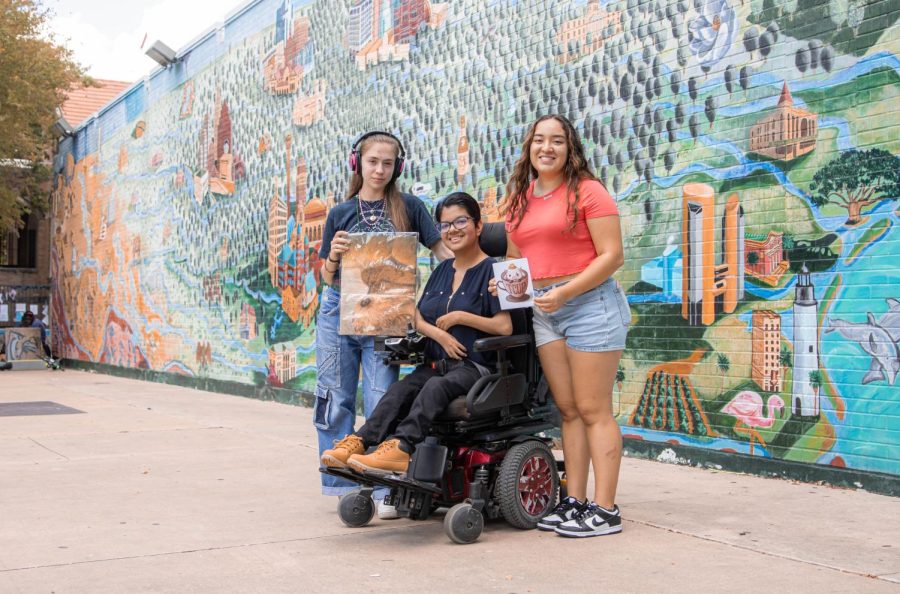New student organization strives to make Austin art markets more accessible
September 16, 2022
Bonding over their El Paso roots and shared interest for art, Rachel Salcido, Paris Fitzgerald and Vivian Macias created a new student organization with the goal of improving accessibility at markets, helping student artists promote their art and providing education on the inner workings of the art market business. The trio launched the Texas Creative Union Project this fall with their first Instagram post on Sept. 5.
In the past, studio art sophomore Rachel Salcido said the group often felt a lack of communication with market owners, which often resulted in the group feeling unsupported.
To combat struggles many student artists face when starting their own businesses or finding outlets to promote their work, Salcido said the organization hopes to create a “beginner-friendly art market for student artists.”
We really just want to create a community setting where we can all learn from each other.
— Rachel Salcido
Salcido said the organization will provide three departments — creative marketing, event coordination and finance — to provide student artists educational tools to kickstart their business endeavors. The organization plans to hold workshops on topics such as graphic design tools, inventory and the basics of maintaining a business, Salcido said.
“I felt … this lack of connection between the host and the people of the market,” Salcido said. “We hope to keep a very close-knit community with all of our members so they don’t feel that disconnection or that mild dehumanization (at) their markets. It’s all gonna be very community-based.”
One obstacle for many student artists looking to expand their work comes from economic barriers, said Fitzgerald, an international relations and global studies junior. She said she aims to focus her efforts with the organization on financial accessibility.
Fitzgerald said art markets typically charge vendors a flat fee ranging from $25 to $100 to participate in the event, regardless of if the vendor makes any sales. TCUP aims to organize their markets differently — instead of charging vendors a flat fee, Fitzgerald said TCUP will charge them 10% of their earnings to help vendors save money.
“The 10% goes into our communal TPOT, (which) is a communal fund that goes back into the student artists,” Fitzgerald said. “(It’ll go toward) collective materials — like buttons, banners and tablecloths — that benefit everybody equally.”
Salcido said when it comes to the roles of organizers and vendors, there is a certain accountability each party must take with the marketplace process.
“If a certain vendor doesn’t make any money, the organization doesn’t really bat an eye because … (they) already paid the flat fee,” Salcido said. “With our (10%) fee, we hope to create a system based on accountability on both parties. (TCUP) will have to do as much as possible to promote (art market events), and then once our vendors show up and sell, doing both of our parts is going to mutually benefit the both of us.”
Vivian Macias, a government and public health junior, said the most important factor of the organization remains its inclusivity. Macias said the organization is not exclusive to artists, offering all students the opportunity to learn more about the logistical and financial side of the art market world.
“We’re all fighting to make the best thing for the cheapest rate so everyone buys it, but that shouldn’t be the point,” Macias said. “If you love something, you should sell it for however much you want and … not be put in those awkward positions.”
Salcido said TCUP strives to eliminate the separation that often occurs between market organizers and their vendors, creating a welcoming, inclusive and well-connected environment that fosters the growth of UT student artists.
“We’re all still learning from this,” Salcido said. “We really just want to create a community setting where we can all learn from each other.”



